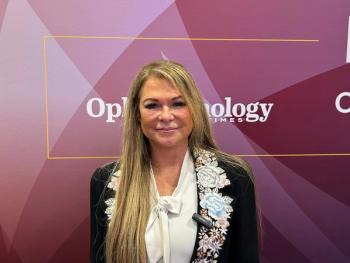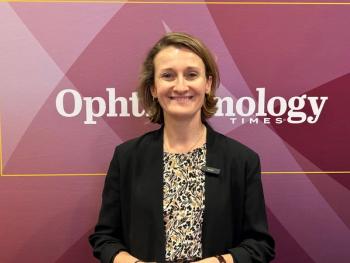
IVCM an emerging tool from research into clinic
In vivo confocal microscopy has enormous potential to be used in a large number of physiological and pathological ocular conditions.
Take-home
In vivo confocal microscopy has enormous potential to be used in a large number of physiological and pathological ocular conditions.
Anterior Segment Techniques By Pedram Hamrah, MD, and Ahmad Kheirkhah, MD
Editor’s Note: In vivo confocal microscopy is no longer only a research tool. It has important potentially sight-saving clinical applications. Confocal microscopy must be done if Acanthamoeba keratitis or fungal keratitis is being considered in the differential diagnosis. Culture results take too long. Early diagnosis is the key to a favorable result.
-Ernest W. Kornmehl, MD
Ophthalmologists face the challenge of differentiating among multiple clinical entities, with clinical suspicion initially often guiding treatment. Patient history and slit lamp examination are often the only tools available for diagnosis and monitoring of treatment.
A number of new imaging technologies have emerged in research and clinical ophthalmology.
Among these, in vivo confocal microscopy (IVCM) is a novel, noninvasive, high-resolution tool that allows imaging of the living ocular structures at the cellular level. Provision of images comparable to histochemical methods by IVCM, enables clinicians to study epithelial cells, keratocytes, endothelial cells, nerves, and immune cells in different ocular and systemic diseases, many of which are not visible by slit lamp examination (Figure 1).
Recently, the indications for IVCM have been significantly expanded beyond an adjunct tool in diagnosis of Acanthamoeba and fungal keratitis, and there have been numerous publications showing the utility of IVCM in various conditions, some of which have been summarized below.
Infectious keratitis
Although cultures remain the gold standard for the diagnosis of causative microorganisms in infectious keratitis, they suffer from high false-negative rates and a significant delay in obtaining the results, particularly in cases of slow-growing organisms, such as fungi and Acanthamoeba. Given the importance of timing in diagnosis and initiation of anti-microbial therapy, there is an exciting emerging role for IVCM evolving not only for the diagnosis of microbial keratitis, but also potentially in the management of this disease.
The initial presentation of Acanthamoeba keratitis (AK) is typically nonspecific, often leading to misdiagnosis of patients and delay in appropriate therapy, in part due to poor yield and delay of positive cultures.
However, both cyst and trophozoite forms of this parasite can be identified by IVCM, allowing for possible early diagnosis early in the course of disease. Cysts are 15 to 28 µm with a double-walled spherical structure. Trophozoites are usually 25 to 40 µm in diameter, are hyperreflective, and surrounded by hyporeflective edema (Figure 2).
These structures may be difficult to differentiate from leukocytes, epithelial cells, as well as debris, and expert readers should be consulted for image analysis. According to several studies, IVCM has had a sensitivity of 91% and a specificity of 100% for diagnosis of AK.
In addition, during the prolonged course of treatment, IVCM could be used to demonstrate the presence or absence of cysts and trophozoites and thereby help judge the efficacy of the treatment.
The rate of fungal keratitis has recently increased in the United States. The initial presentation of fungal keratitis is indolent and non-specific. Cultures may be delayed for weeks and have a low sensitivity. IVCM can directly demonstrate the presence of fungal elements and their depth and distribution within the cornea. In filamentous fungal keratitis, such as with Aspergillus and Fusarium species, hyphae can be visualized by IVCM as branching hyper-reflective elements (Figure 2).
Fungi, however, must be differentiated subbasal corneal epithelial nerves.
In addition, yeasts such as Candida Albicans have round, budding bodies that may develop pseudohyphae. IVCM has had a sensitivity of 94% and a specificity of 78% in patients with fungal keratitis, according to several studies.
As with AK, IVCM can be applied for monitoring and guidance of treatment to show the resolution of fungal elements or conversely increased depth of their invasion, potentially mandating therapeutic modification or need for surgical intervention in unresponsive cases.
In all forms of infectious keratitis, IVCM has shown a significant increase in corneal immune dendritic cells and a significant decrease in corneal nerves not only in the involved eye but also in the contralateral apparently normal eyes-suggesting that measurement of corneal sensation may not be helpful to determine the etiology of diseases and that subjective comparison between eyes may yield inaccurate results.
Dry eye disease
Due to symptom-sign disparity in dry eye disease, there are various efforts to employ new diagnostic tools for this very common condition. Among these, IVCM is actively being studied for this purpose. By showing the inflammatory and immunologic cellular changes in the cornea and conjunctiva (Figure 3), IVCM may be used as a tool to determine the level of inflammation.
Though inflammation is not specific to dry eye disease, IVCM would potentially allow stratification for therapeutic strategies and monitoring of therapeutic response to anti-inflammatory therapy in the clinic and for clinical trials for dry eye disease.
Neurotrophic keratopathy
Neurotrophic keratopathy (NK) is a corneal disease caused by reduced corneal nerves and thus decreased sensation. It is characterized by impaired function of the corneal epithelial cells and delayed wound healing.
Although the function of corneal nerves can be evaluated using esthesiometers, their density can be quantitatively assessed by IVCM. As corneal sensation is only reduced when the corneal nerve density decreases to less than 50% of the normal range, IVCM is a more accurate tool to detect the nerve loss early in the disease course and has been utilized as such particularly in monitoring diabetic patients.
Moreover, it can be used to evaluate the course of nerve regeneration postsurgically or with therapeutic intervention, such as with autologous serum tears.
Corneal dystrophies
IVCM is helpful in evaluating the morphological characteristics of corneal dystrophies at the histological level and may be helpful in diagnosis, determination of progression, and understanding the pathophysiology of disease. The use of IVCM may be valuable in the differential diagnosis of corneal dystrophies, especially when diagnosis is otherwise uncertain, as observations obtained using IVCM may be unique to each dystrophy.
This modality is a useful technique to differentiate corneal dystrophies in vivo, bypassing the dependence on genetic studies and histopathology.
Corneal surgery
IVCM has been extensively used to evaluate the effects of various surgeries on the corneal structures. Among these, the effects of corneal laser refractive procedures and corneal transplantation on the subbasal nerve plexus have been studied.
Subbasal corneal nerves are clearly visible in IVCM and they can be easily quantified and morphologically described. Following photorefractive keratectomy, subbasal corneal nerves are undetectable by IVCM in the treatment area, but slowly returning to near normal density within 2 years.
In contrast, after LASIK, low subbasal nerve density has been observed at 2 to 3 years and even at 5 years following surgery.
More recently, IVCM has been used to monitor recovery after collagen crosslinking.
Other conditions
Additional clinical indications for IVCM are its potential utility for detection of ocular surface squamous neoplasia (OSSN), with the results comparable to the impression cytology. Moreover, in patients with corneal neuropathy, IVCM may aid in the determination of abnormal underlying nerve alterations (Figure 4).
These patients, who may have significant corneal neuralgia, pain, or photoallodynia, may not demonstrate abnormal findings on slit lamp examination, which may lead to the diagnosis of non-somatic pain.
However, IVCM demonstrates nerve alterations, such as significant reduction of nerve density and abnormal morphology of nerves.
IVCM may also provide additional information at the limbus in patients with limbal stem cell deficiency, and may serve as an adjunct noninvasive diagnostic tool in the future.
In conclusion, IVCM is an emerging clinical tool for the study of ocular structures at the cellular level. It has enormous potential to be used in a large number of physiological and pathological ocular conditions and its utility is currently moving from research into the clinic.
Ernest W. Kornmehl, MD, editor of the “Anterior Segment Techniques” column and associate medical editor on Ophthalmology Times’ Editorial Advisory board, reviewed this article. He is medical director, Kornmehl Laser Eye Associates, Boston; clinical instructor at Harvard Medical School, and associate clinical professor in ophthalmology, Tufts School of Medicine.
Pedram Hamrah, MD, is affiliated with the Ocular Surface Imaging Center, Cornea and Refractive Surgery Service, Massachusetts Eye and Ear Infirmary, Department of Ophthalmology, Harvard Medical School, Boston.
Ahmad Kheirkhah, MD, is affiliated with the Ocular Surface Imaging Center, Massachusetts Eye and Ear Infirmary, Department of Ophthalmology, Harvard Medical School, Boston.
Newsletter
Don’t miss out—get Ophthalmology Times updates on the latest clinical advancements and expert interviews, straight to your inbox.



















































.png)


